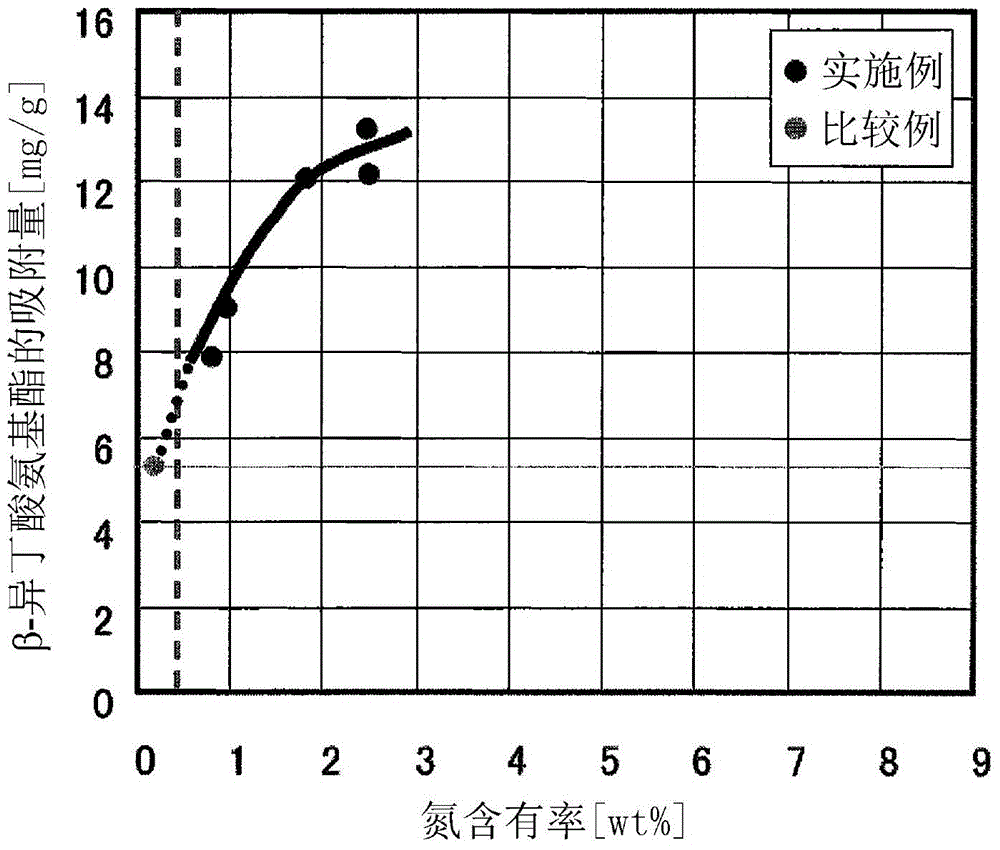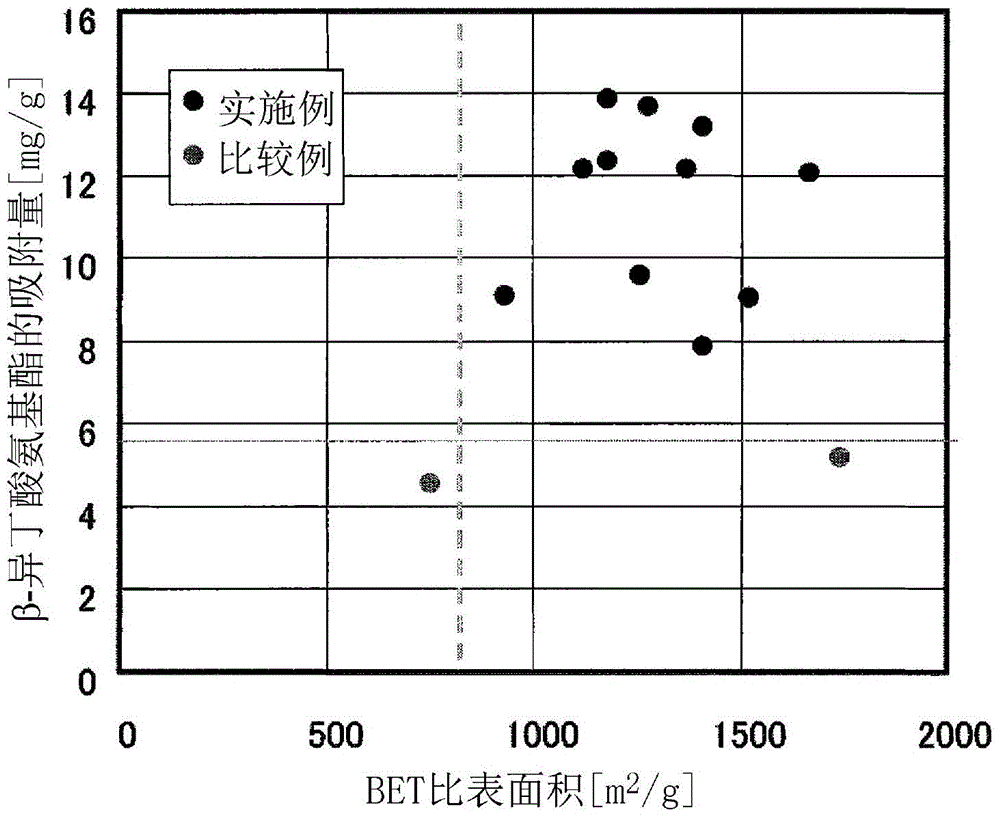Orally administered adsorbent, therapeutic agent for renal disease, and therapeutic agent for liver disease
An adsorbent, oral technology, applied in the field of liver disease treatment or preventive agent, kidney disease treatment or preventive agent, can solve the problem of large economic burden on patients, and achieve the effect of excellent adsorption capacity and high efficacy
- Summary
- Abstract
- Description
- Claims
- Application Information
AI Technical Summary
Problems solved by technology
Method used
Image
Examples
Embodiment 1
[0129]4500 g of ion-exchanged water, 0.9 g of sodium nitrite, and 6.8 g of methylcellulose (METOLOSE) 60SH-15, manufactured by Shin-Etsu Chemical Co., Ltd., were placed in a 10 L polymerization reactor. Here, 376g of styrene, 1049g of divinylbenzene, namely 57% of divinylbenzene and 43% of ethylvinylbenzene, 75g of acrylonitrile, 8.7g of 2,2'-azobis(2, 4-dimethylvaleronitrile) and 525 g hexane as porogen. Thereafter, the inside of the system was replaced with nitrogen gas. This two-phase system was heated to 55° C. while stirring at 180 rpm, and then kept in this state for 20 hours. Then, the obtained resin was washed with water, filtered, and dried at 180° C. for 16 hours under nitrogen flow to obtain a spherical porous synthetic resin with an average particle diameter of 197 μm.
[0130] The obtained spherical porous synthetic resin was charged into a reaction tube with a porous plate, and infusible treatment was performed in a vertical tubular furnace. As non-melting tre...
Embodiment 2
[0132] The resin preparation operation of Example 1 was repeated except that 301 g of styrene, 150 g of acrylonitrile, and 180 rpm of the two-phase system were used to prepare a spherical porous synthetic resin. The obtained spherical porous synthetic resin had an average particle diameter of 193 μm.
[0133] And, in addition to using the spherical porous synthetic resin, an activation treatment was performed until the BET specific surface area became 1630m 2 / g, the operations of the non-melting treatment and the activation treatment of Example 1 were repeated to prepare surface-modified spherical activated carbon. The properties of the obtained surface-modified spherical activated carbon are shown in Table 1.
Embodiment 3
[0135] 4500 g of deionized water, 6.0 g of sodium nitrite, and 6.8 g of methylcellulose (METOLOSE) 60SH-15, manufactured by Shin-Etsu Chemical Co., Ltd., were placed in a 10 L polymerization reactor. Here, 582 g of styrene, 393 g of divinylbenzene, namely 57% of divinylbenzene and 43% of ethylvinylbenzene, 525 g of acrylonitrile and 8.7 g of 2,2'-azobis(2, 4-dimethylvaleronitrile), and 375 g of hexane as a porogen, the system was replaced with nitrogen. This two-phase system was heated to 55° C. while stirring at 150 rpm, and then kept in this state for 20 hours. Then, the obtained resin was washed with water, filtered, and dried at 180° C. for 16 hours under nitrogen flow to obtain a spherical porous synthetic resin with an average particle diameter of 171 μm.
[0136] The obtained spherical porous synthetic resin was charged into a reaction tube with a porous plate, and infusible treatment was performed in a vertical tubular furnace. As non-melting treatment, dry air is di...
PUM
| Property | Measurement | Unit |
|---|---|---|
| particle size | aaaaa | aaaaa |
| particle size | aaaaa | aaaaa |
| specific surface area | aaaaa | aaaaa |
Abstract
Description
Claims
Application Information
 Login to View More
Login to View More - R&D
- Intellectual Property
- Life Sciences
- Materials
- Tech Scout
- Unparalleled Data Quality
- Higher Quality Content
- 60% Fewer Hallucinations
Browse by: Latest US Patents, China's latest patents, Technical Efficacy Thesaurus, Application Domain, Technology Topic, Popular Technical Reports.
© 2025 PatSnap. All rights reserved.Legal|Privacy policy|Modern Slavery Act Transparency Statement|Sitemap|About US| Contact US: help@patsnap.com



